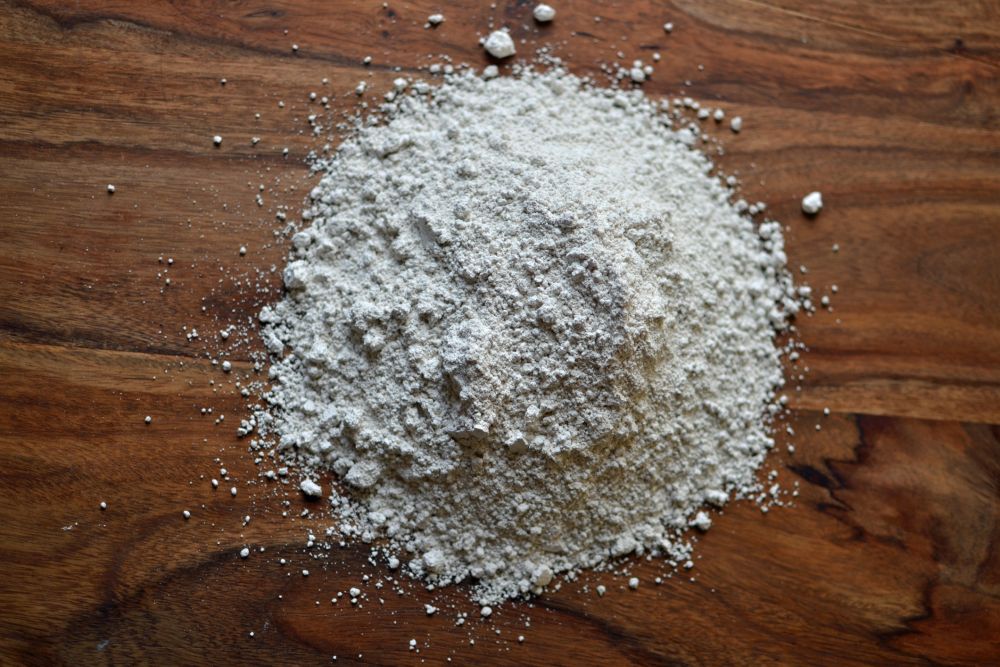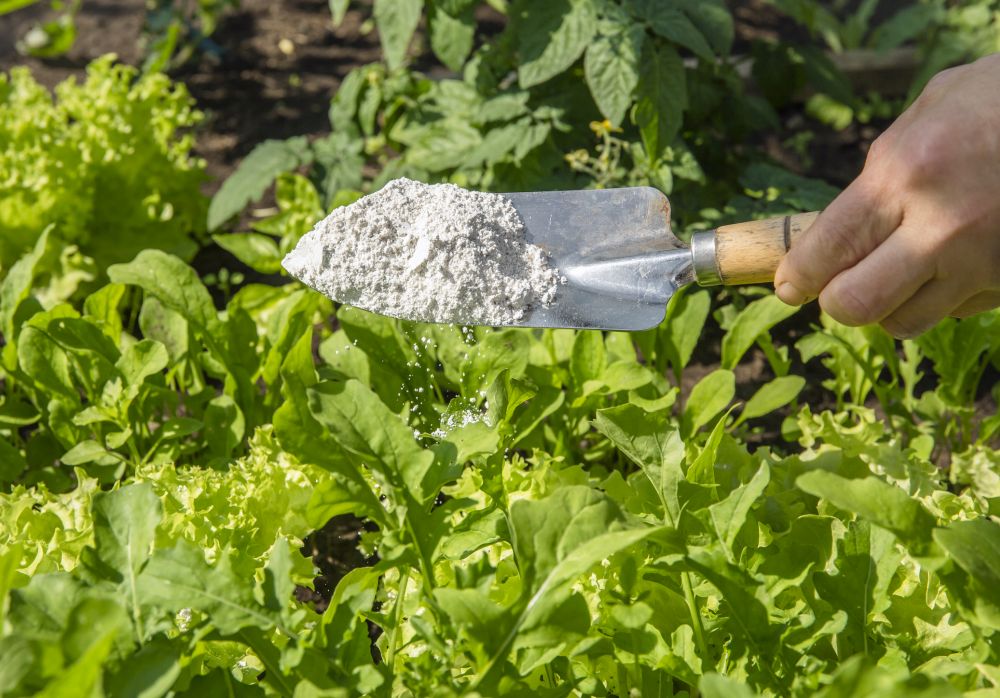Diatomaceous Earth Uses – Control Pests With Diatomaceous Earth
Before diatomaceous earth was discovered as an effective and relatively safe pesticide, pests have been having a field day in our gardens. These little bugs have always been a thorn in every gardener’s side since time immemorial. The damage that pests cause to crops is estimated to be billions of dollars in the USA alone. So when a fellow gardener or an expert recommends a “new” pesticide such as diatomaceous earth to manage the pests in your garden, you’d be quick to accept.
Not so fast. As with every other pesticide including organic ones, there’s always a downside related to the environment. So before you start applying diatomaceous earth in the garden and inside the house, you need to know how it works and whether it is toxic to pets and children. Read on to find all about diatomaceous earth, what makes it a better pesticide, and how to safely apply it in the garden.
All about Diatomaceous Earth
Diatomaceous earth (DE) is not a new discovery. It has been around for many decades. When it was first discovered, it immediately became an essential ingredient in the making of dynamite. But what exactly is diatomaceous earth?
The chalk-like material comes from the remains of single-celled organisms called diatoms. Similar to algae, these prehistoric diatoms lived in large colonies. When they died, their residue formed a dense layer that looks like white rocks but with a rather fragile texture.
Thanks to its abrasive nature, diatomaceous earth was adopted by many industries. It’s an active component of the toothpaste you use and it also acts as an anti-caking element in grain-storage facilities. But it was only recently discovered that it had a lethal effect on pests and bugs both at homes and in the gardens.
Diatomaceous earth often comes in two types.
- Pool Grade DE: This form of diatomaceous earth is treated with high heat which improves its absorbent qualities. However, it causes serious irritation to the lungs and should be handled with caution.
- Food Grade DE: This type is more widespread. You can use it to fight pests at home as well as those in the garden. It has mild side effects on adults although it’s recommended to expose children or pets to the substance.
Advantages of Diatomaceous Earth
If diatomaceous earth is the fossilized remains of prehistoric organisms, what makes it more effective in killing pests than the chemical pesticides that people have been using so far? Well, for one thing, since it occurs in nature, that usually means it is a better option than the chemical or synthesized products. Apart from that, diatomaceous earth has more advantages in your garden and around the house over the chemical options.
- Unlike chemical pesticides, pests do not build a resistance or tolerance to diatomaceous earth. So no matter how long you use it, it will exterminate your garden pests even if they have been exposed to it before.
- This means you don’t have to increase the dosage of diatomaceous earth to make it more effective. Just keep applying it in small doses and it will work every time.
- As a natural element, it has zero chemicals in its makeup. So you won’t have to worry about environmental pollution or contaminating the soil.
- It is easy to apply and remove. Diatomaceous earth doesn’t cause any changes to the soil structure and you can start planting the garden without delays or waiting for the soil to heal.
- If it doesn’t get moist, diatomaceous earth will stay effective no matter how long it stays in the garden. Chemical pesticides, on the other hand, lose their potency and need to be refreshed every few days.
Uses of Diatomaceous Earth
For a natural product that comes from the depths of the earth, diatomaceous earth has a lot of benefits and uses. We already mentioned that it goes into the making of dynamite, toothpaste, and grain storage. But what kind of pests does it really exterminate? Here are some of the garden-variety pests that you can effectively control with diatomaceous earth.
- Bulb thrips, borer, and mites: The problem with these types of pests is that they can lay dormant on the skin of the bulb until you plant. As the bulb sprouts, the dormant pests come to life and cause damage to the young plants. So dip the bulb before planting in the powdered diatomaceous earth to nip those pests in the bud.
- Pillbugs and earwigs: Most often found in greenhouses, pillbugs often lurk around seed trays while earwigs nest near or on small plants. So apply a thin line of diatomaceous earth around the edges of the trays and around the bases of young plants. Make sure the substance doesn’t touch the stalks of the plants or come in contact with sprouting seedlings.
- Asparagus beetle, potato beetle, cutworm, and Mexican bean beetle: Beetles of all types are bad news for every gardener. They attack rhizomes, bulbs, fruits, and flowers leaving nothing but decay and dead or dying plants behind them. They swarm around the plants in hot and dry seasons. So give your plants a good dusting with diatomaceous earth. As long as there’s no rainfall, the substance will remain active and potent against the beetles.
- Aphids: Aphids are as ubiquitous as there are sands on the beach. That’s no hyperbole. Any time you examine the plants in your garden or your houseplants closely, you’ll see those tiny bugs scurrying up and down and feasting on the leaves and stems. They particularly favor cabbages, cauliflower, kale, and broccoli. So sprinkle diatomaceous earth under the leaves of these veggies and around their base as a defense line. It will stop aphids from damaging your veggie patch.
How Does Diatomaceous Earth Work?
So if diatomaceous earth is totally chemically-free, how exactly does it work against pests? What makes it so lethal and its potency is long-lasting as long as water or moisture is not involved? The answer to these questions has to do with the nature of the diatomaceous earth.
Unlike chemicals pesticides that use elements toxic to pests to kill them, diatomaceous earth uses a mechanical method.
The tiny grains of diatomaceous earth although have a smooth surface to the naked eye, actually have barbs. The barbs are almost microscopic but cover the whole surface of each grain. When insects walk or crawl over the powder-like diatomaceous earth, the barbed grains stick to the body of the insects.
Each barb inflicts a deep wound in the insect’s shell. Insects large and small are no match to so many wounds and as fluids ooze out of its body, the insect usually dies shortly after. So as long as the powder is dry, the barbs on each cylinder grain remain intact and ready to impale an insect. Water on the other hand turns the chalky powder into a paste which blunts the tiny barbs and makes the substance ineffective as a pesticide.
You can expect results within the first 3 to 5 days of applying the powder. Even beetles with their hard shells are no match to the barbed cylinders of diatomaceous earth. Usually, it takes about a week for the beetle to succumb to its fatal wounds. But it’s usually a week full of agony and most importantly, it’s a week when the beetle is too busy dying to disturb your rose bushes or veggie gardens.
How to Apply Diatomaceous Earth in the Garden
On top of that, DE is easy to apply. Since it comes in powder form, then the only way to apply it is to dust the plants with it. However, there are a few caveats. So let’s go through them.
- Avoid dusting the petals of flowers with the material since it could kill bees and other pollinators. Remember you’re using diatomaceous earth against pests, not the good bugs that pollinate your veggies and feed on other pests.
- Apply the powder form of diatomaceous earth on dry surfaces when you don’t expect rainfall for the next 5 to 7 days.
- Don’t apply it on the soil immediately before or after irrigating the plants. That renders the barbed grains less effective.
- Spread the powder in thick lines around the base of the plants, around pots, and seed trays. It will lie in wait for pests as they move between one plant or seedling to the next.
- If you have an infestation of ants, sprinkle the DE powder near driveways, and around the entry to their nest.
- If the powder gets wet, remove it and wait for the soil or surface to dry out before you apply a fresh line of diatomaceous earth.
- As much as possible try to avoid dusting the leaves and stems of flowering plants. The barbed grains could be blown by the wind into the blooming flower. This would make the flower a lethal trap for bees.
- Try to keep the powder on the ground. This might make it more prone to getting wet, but it will also protect pollinators that visit your garden against it.
DE FAQs
We still haven’t addressed some other pertinent questions regarding the safety of pets and children around DE. The following questions cover that as well as other issues about the usage of this pesticide.
What kind of exposure might I get with DE?
Generally speaking, the only way you might get exposed to diatomaceous earth is if you inhale the substance while applying it. That risk becomes even higher if you happen to dust your plants with it on a windy day. The grains with their glass-like shards will irritate the lungs. Long exposure could lead to serious health implications.
What if my pet dog or cat ingests the powder? And how about children?
If DE makes its way to a child’s digestive system, the body will only absorb trace amounts of it. The rest will safely leave the body through the natural process of elimination. Those little amounts the body absorbs pose no health risk on the person or animal that ingested the powder.
Will using diatomaceous earth contaminate the soil in my garden?
The main component of DE is silicon. This is the most common element in the soil. Silicon is also the main ingredient of sand. So after diatomaceous earth powder gets washed away into the soil, this will have little impact on the pH levels of the soil. It will not change the texture of the soil either. You’ll need to dump bushels of the powder into your garden to make any noticeable impact.
How much of a risk is diatomaceous earth on birds and fish?
The effect of DE on birds is considerably less than the damage that a sandy storm will have on them. As for fish, as soon as the grains of powder fall into the pond or lake, they will add to the piles of sand already there. In other words, the fish will not feel any difference one way or the other.

